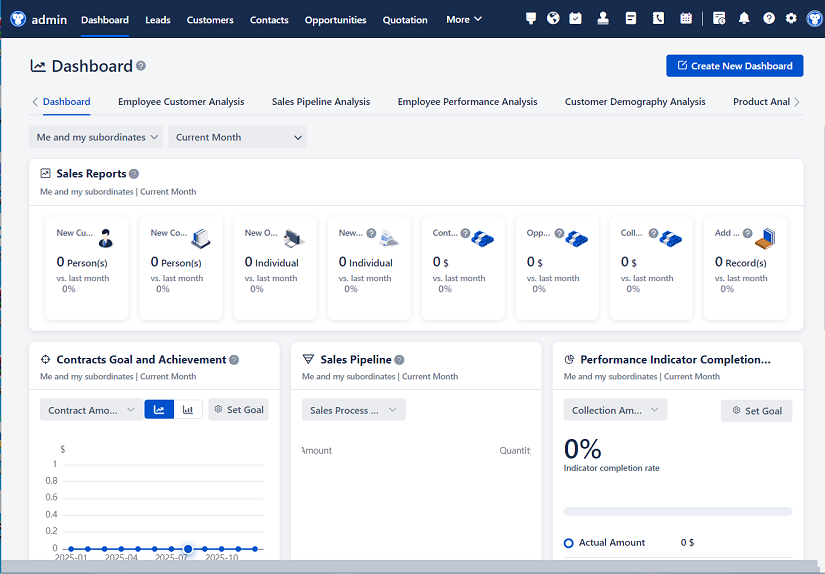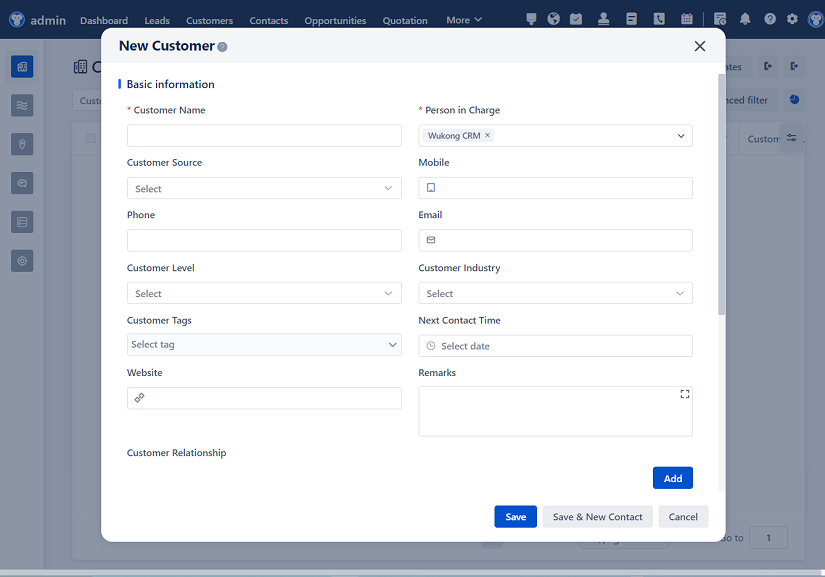
△Click on the top right corner to try Wukong CRM for free
Hey there! So, you've probably heard the term "CRM" thrown around a lot, right? But what about "Education CRM"? It sounds a bit more specific, doesn't it? Well, let me break it down for you. Education CRM, or Customer Relationship Management in the education sector, is all about using technology to manage and improve interactions with students, parents, and even alumni. It's like having a super-smart assistant that helps schools and universities keep track of everything from student applications to parent-teacher meetings.
Now, why would an educational institution need something like this? Think about it: schools and universities deal with a ton of data. We're talking about student records, grades, attendance, and so much more. Managing all of this information can be a real headache, especially when you want to make sure everyone is on the same page. That's where Education CRM comes in. It helps streamline all these processes, making life easier for both the staff and the students.
But it's not just about organizing data. A good Education CRM system can also help with communication. Imagine being able to send out personalized messages to students and parents, keeping them updated on important events, deadlines, and even academic progress. It's like having a personal secretary who knows exactly what needs to be done and when.
So, how does it work? Let's dive into the nitty-gritty. First things first, you need to choose the right CRM software. There are a bunch of options out there, each with its own set of features. Some might be better for K-12 schools, while others are more suited for higher education. The key is to find one that fits your institution's needs. You don't want to end up with a system that's too complicated or doesn't do what you need it to do.
Once you've picked the right tool, the next step is to get everyone on board. This means training your staff. I know, I know—training can be a drag, but trust me, it's worth it. When everyone knows how to use the system, it runs smoothly, and you avoid a lot of headaches down the line. Plus, it's a great way to get everyone excited about the new changes. Maybe throw in some pizza and make it a fun event!
After the training, it's time to start migrating your data. This can be a bit of a challenge, but most CRM systems have tools to help with this. You'll want to make sure all your existing data is transferred accurately. It's like moving to a new house—you don't want to leave anything behind, and you definitely don't want to mix up the boxes. Take your time, and if you need help, don't hesitate to reach out to the support team.
Once the data is in, you can start customizing the system to fit your needs. This is where the magic happens. You can set up workflows, create templates for emails, and even integrate other tools you might be using, like your learning management system (LMS). It's like building a custom car—everything is tailored to your preferences, and it makes the whole experience smoother and more efficient.

Now, let's talk about the benefits. One of the biggest advantages of using an Education CRM is improved communication. With a centralized system, you can easily send out updates, reminders, and even surveys. It's a great way to keep everyone informed and engaged. Plus, it saves a lot of time. No more sending out individual emails or making phone calls. Everything is automated, and you can focus on more important things, like teaching and supporting your students.
Another big benefit is better data management. With an Education CRM, you can track and analyze all sorts of data. Want to see how many students are applying to your school? Easy. Need to check the attendance rates for a particular class? No problem. The system gives you a bird's-eye view of everything, and you can use this information to make better decisions. It's like having a crystal ball that shows you exactly what's going on.

And let's not forget about the long-term benefits. An Education CRM can help you build stronger relationships with your students and their families. By staying in touch and providing personalized support, you can create a more positive and supportive environment. This, in turn, can lead to better outcomes, like higher retention rates and more satisfied students. It's a win-win for everyone involved.
Of course, implementing an Education CRM isn't without its challenges. One of the biggest hurdles is getting buy-in from everyone. Change can be tough, and some people might be resistant to new technology. The key is to communicate the benefits clearly and provide plenty of support. Show them how the system will make their lives easier, and they'll be more likely to get on board.
Another challenge is data security. With all this sensitive information, you need to make sure it's protected. Most CRM systems have robust security measures, but it's still important to follow best practices. Make sure you have strong passwords, regular backups, and a plan in case of a data breach. It's like locking your front door—better safe than sorry.
Finally, there's the cost. Implementing a CRM system can be a significant investment, both in terms of money and time. But think of it as an investment in the future. The benefits, like improved communication and better data management, can pay off in the long run. Plus, many CRM providers offer flexible pricing plans, so you can find one that fits your budget.
So, there you have it—a quick rundown of what Education CRM is, how it works, and why it's worth considering. If you're still on the fence, here are a few questions and answers that might help:
Q: Is Education CRM only for large institutions? A: Not at all! While larger institutions might have more complex needs, smaller schools and colleges can benefit from it too. There are CRM solutions designed for all sizes and types of educational institutions.
Q: How long does it take to implement an Education CRM? A: It depends on the size of your institution and the complexity of your needs. Generally, it can take anywhere from a few weeks to a few months. The key is to plan ahead and give yourself enough time to do it right.
Q: Can an Education CRM integrate with other systems we already use? A: Absolutely! Most modern CRM systems are designed to integrate with other tools, like LMS, SIS (Student Information Systems), and even financial systems. This makes it easy to centralize all your data and processes.

Q: What kind of support can we expect from a CRM provider? A: Most CRM providers offer a range of support options, including training, technical support, and ongoing assistance. It's a good idea to ask about their support services before you sign up, so you know what to expect.
Q: How do we measure the success of our Education CRM implementation? A: Success can be measured in several ways, such as improved communication, better data management, and increased student and parent satisfaction. You can also look at metrics like application rates, retention rates, and overall engagement levels. Regularly reviewing these metrics will help you see the impact of the CRM.
I hope this helps! If you have any more questions, feel free to reach out. Good luck with your Education CRM journey!
Related links:
Free trial of CRM
Understand CRM system
AI CRM Systems

△Click on the top right corner to try Wukong CRM for free